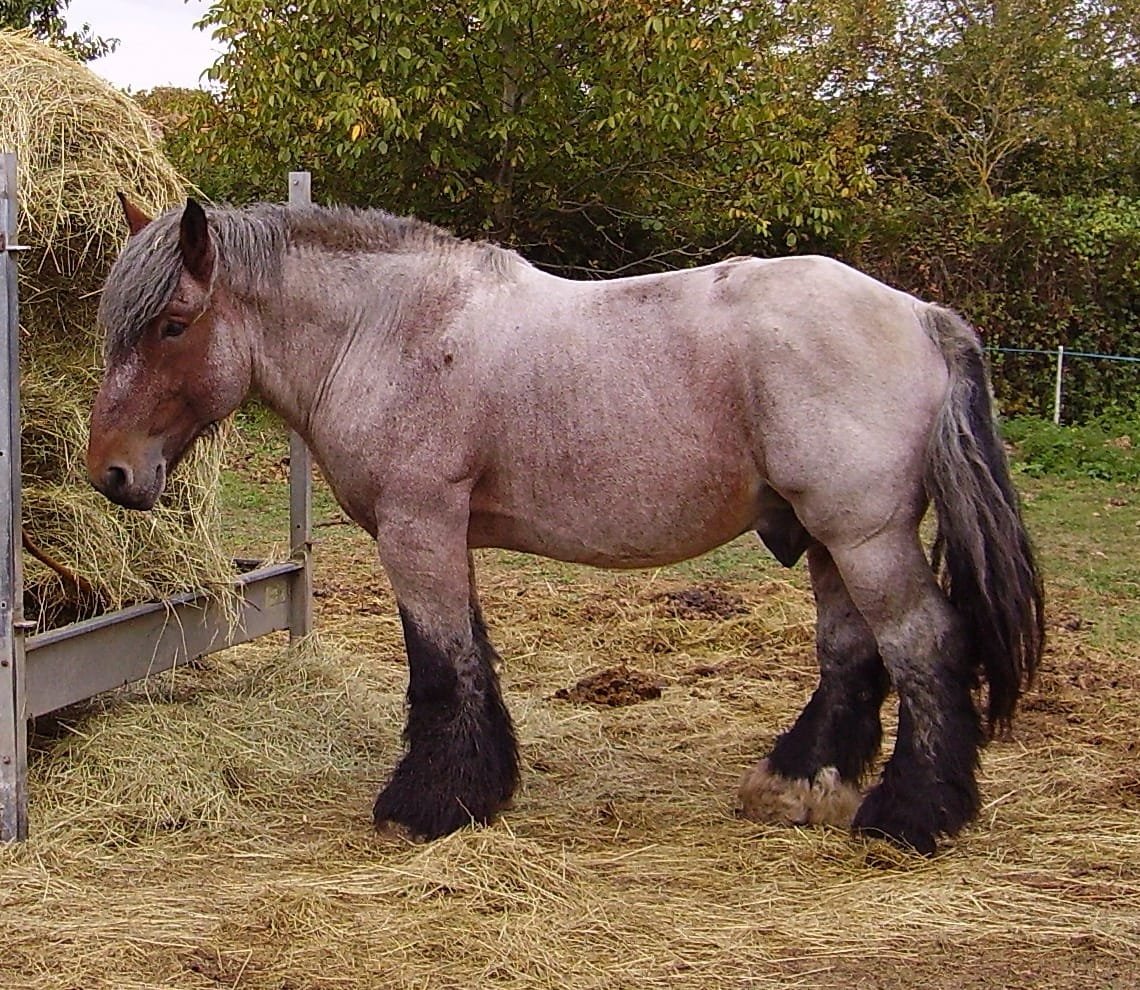Oldest and most valuable draft horse breeds in the world.
Though its numbers have dwindled in the modern era, the Auxois remains an important part of France’s cultural heritage.
Origins and History
The Auxois horse originates from the Burgundy region of France, specifically from the Auxois mountains in the eastern part of the country. The breed’s history dates back to ancient times, but it became more distinct in the 19th century. It is believed to have been developed from local horses crossed with other breeds like the Flemish and Norman horses, which contributed to the horse’s size and strength.
The Auxois horse was initially bred for agricultural purposes, particularly for heavy draft work. These horses were used to plow fields, transport goods, and perform other tasks that required considerable strength. As industrialization spread across Europe, the need for draft horses in agriculture grew, and the Auxois became one of the most trusted breeds for this work.
Auxois horse feature details:
| Feature | Details |
|---|---|
| Origin | Burgundy region, France (Auxois mountains) |
| History | Developed from local horses and crosses with Flemish and Norman breeds. Primarily bred for agricultural and draft work. |
| Size | Height: 15.3 to 16.2 hands (63 to 66 inches at the withers) |
| Build | Strong, muscular, stocky frame with broad shoulders, deep chest, and powerful legs |
| Coat Color | Chestnut or bay, often with a lighter mane and tail |
| Temperament | Calm, docile, and gentle; easy to handle and manage |
| Primary Use | Historically used for agricultural work (plowing, pulling carts, etc.) |
| Strength | Excellent pulling power; capable of heavy draft work |
| Modern-Day Uses | Light draft work, organic farming, tourism (carriage rides, demonstrations), equestrian sports (driving competitions, draft horse events) |
| Conservation Status | Declining numbers in the past, but currently under conservation efforts and breeding programs |
| Personality | Friendly and reliable, making them ideal for families and less experienced riders |
| Contribution to Agriculture | Vital role in traditional farming before mechanization, still used in areas where machinery isn’t practical |
| Breeding and Preservation | Focused on maintaining genetic diversity and preserving the breed’s strength and calm nature |
| Modern Roles in Industry | Used in niche markets, such as organic farming, forested areas, and for horse-drawn tourism activities |
Physical Characteristics
One of the defining features of the Auxois horse is its robust and muscular build. This breed is typically a large draft horse, standing about 15.3 to 16.2 hands high (63 to 66 inches at the withers). It has a powerful, stocky frame with broad shoulders, a deep chest, and strong legs—traits that are necessary for the heavy labor the breed was traditionally used for.
The coat of the Auxois horse is usually a chestnut or bay color, and they often have a slightly lighter mane and tail. Their appearance is striking, with their solid, dense body and calm demeanor. Their well-muscled physique gives them the ability to pull heavy loads, making them ideal for farming tasks and even carting.
Temperament
Auxois horses are known for their calm and docile nature. These horses are easy to handle, which is crucial for farm work. Their temperament makes them good companions for people who need a reliable, hard-working animal. While they are strong and capable of heavy work, they are not known to be aggressive or difficult to manage.
Their gentle nature makes them particularly suited to work with families, children, and less experienced riders. This friendly temperament has also made them a popular choice for equestrian activities, such as light draft work or even pleasure driving.
Role in Agriculture and Industry
The primary role of the Auxois horse throughout history has been as a draft horse for agricultural labor. In the past, these horses were an essential part of farm life, helping to plow fields, pull carts, and transport goods. They could work long hours in tough conditions and were essential to the survival and success of many rural communities.
With the advent of modern machinery, the role of the horse in agriculture began to diminish, and the Auxois, like many other draft horse breeds, saw a decline in numbers. However, their strength and reliability are still highly valued in some niche markets, such as organic farming or working in areas where machinery cannot easily go, like steep or forested terrains.
Conservation Efforts
As with many traditional breeds, the Auxois horse faced a decline in numbers as the need for draft horses decreased with mechanization. However, there have been efforts in recent years to preserve and protect the breed. Various organizations in France have worked to raise awareness about the importance of preserving the Auxois and other native horse breeds.
Today, breeding programs focus on maintaining the horse’s strong draft capabilities while also ensuring genetic diversity to avoid inbreeding. The breed has become a symbol of heritage, and its numbers have begun to stabilize. There are also efforts to reintroduce the breed to some agricultural and tourism sectors where their strength and unique characteristics are in demand.
Modern-Day Uses
While the Auxois horse is no longer a widespread tool in agricultural labor, it still has several modern-day uses. Some farms and smallholdings use them for light draft work, and they are also employed in tourism industries where people enjoy horse-drawn carriage rides or plowing demonstrations. In these settings, the Auxois’s calm temperament and strength make it an ideal choice.
The Auxois horse has also found a place in equestrian sports, particularly in driving competitions and draft horse events. Their solid build and ability to perform under pressure make them excellent candidates for these activities.

